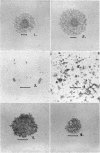Abstract
Ford, Denys K. (University of British Columbia, Vancouver, Canada), and Joyce Macdonald. Morphology of human genital “T-strain” pleuropneumonia-like organisms. J. Bacteriol. 85:649–653. 1963.—The morphology of Shepard's “T-strain” organisms from the human genital tract was investigated. The incubation of “T-strains” in 20% CO2 with 80% nitrogen for 4 to 5 days caused surface outgrowth from the central core of the colonies embedded in the agar. Filtration through HA, PH, and VC Millipore filters showed that the elementary particles of “T-strains” were between 0.3 and 0.1 μ in diameter. “T-strain” pleuropneumonia-like organisms (PPLO) from broth cultures, stained by Giemsa's method, were seen to be minute, spherical particles, similar in size to the particles of the large-colony strains. Colonies of “T-strains,” when prepared by the microculture, fixed-agar-block, and Formvar methods, resembled those of large-colony PPLO. It was concluded that “T-strain” organisms were true PPLO.
Full text
PDF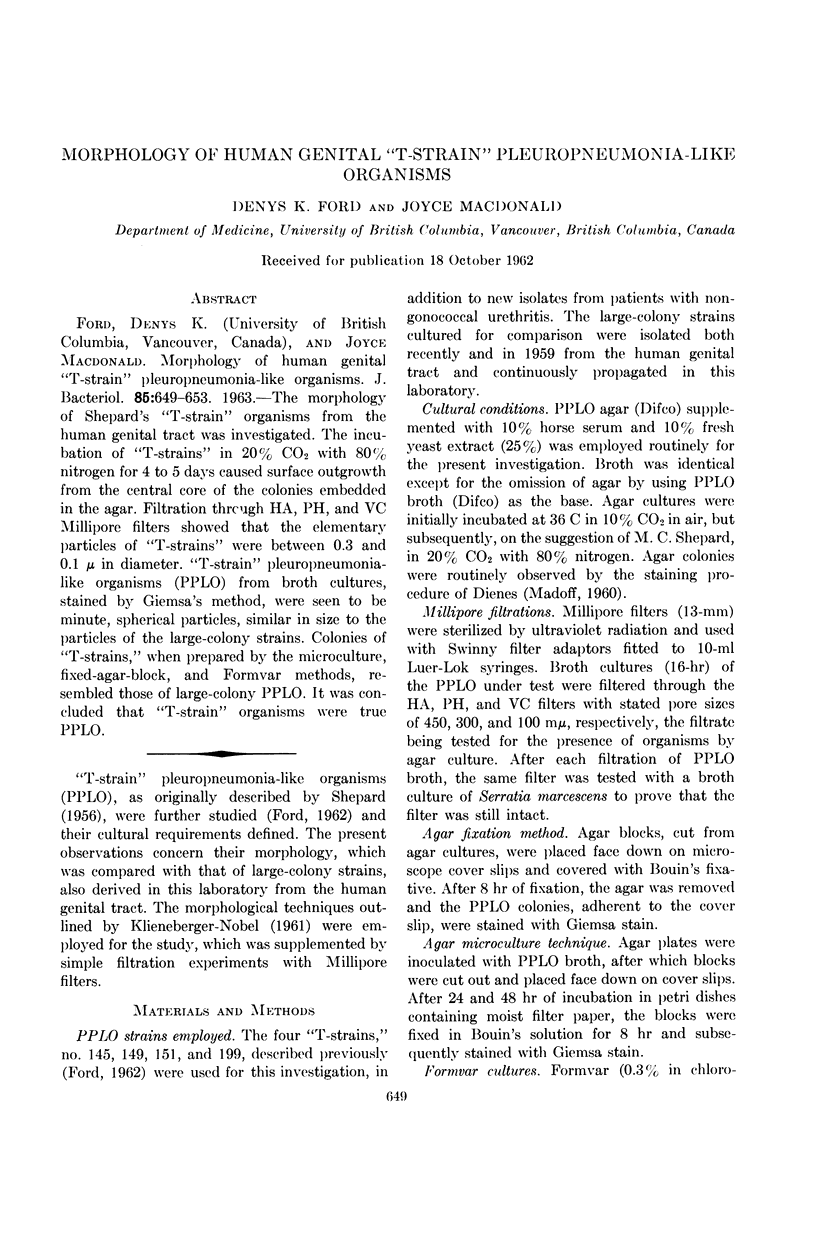

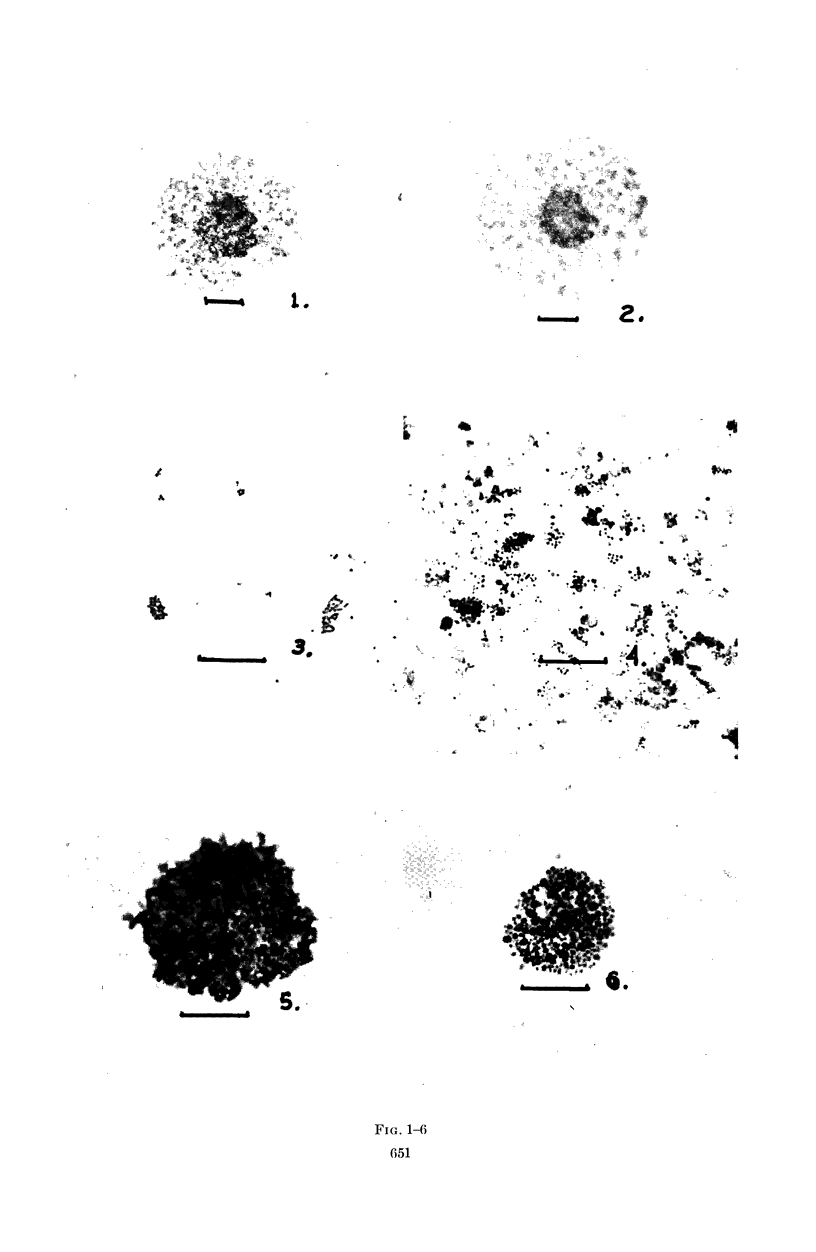
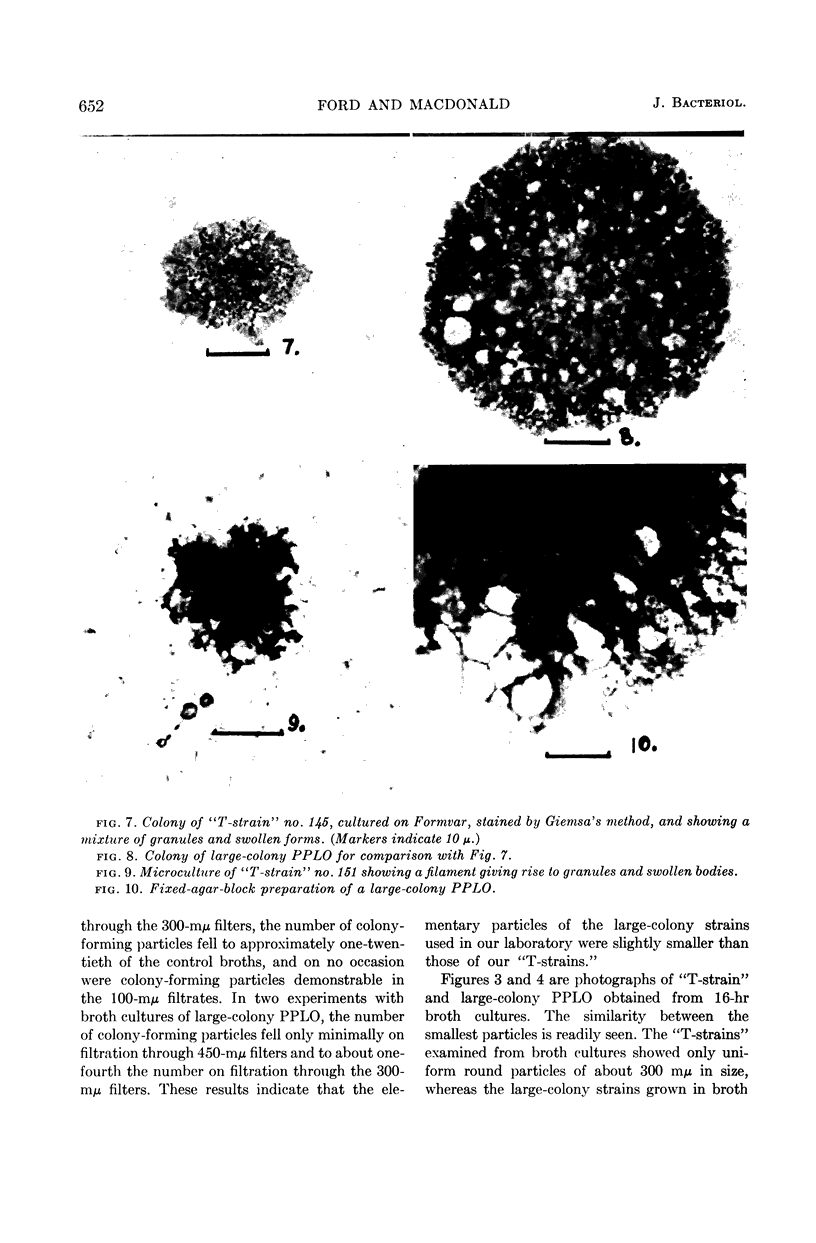
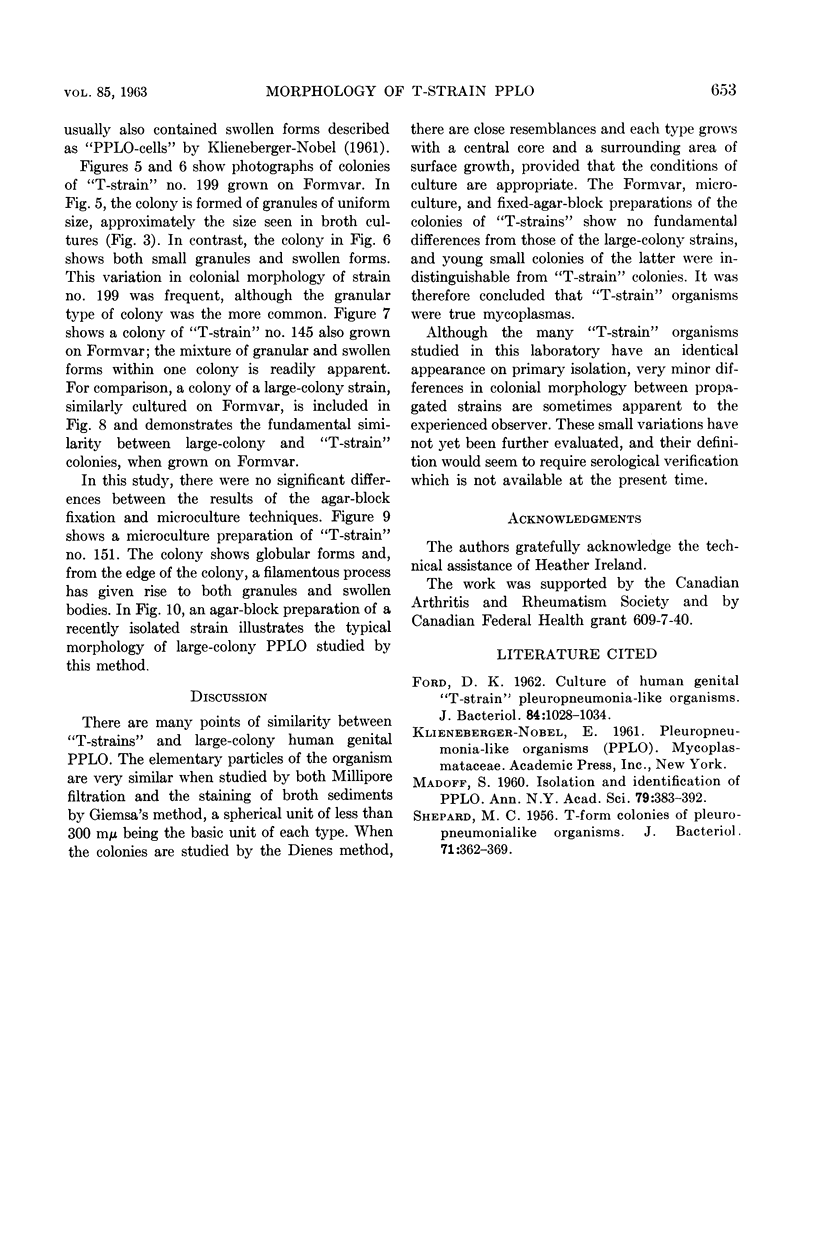
Images in this article
Selected References
These references are in PubMed. This may not be the complete list of references from this article.
- Ford D. K. CULTURE OF HUMAN GENITAL "T-STRAIN" PLEUROPNEUMONIA-LIKE ORGANISMS. J Bacteriol. 1962 Nov;84(5):1028–1034. doi: 10.1128/jb.84.5.1028-1034.1962. [DOI] [PMC free article] [PubMed] [Google Scholar]
- MADOFF S. Isolation and identification of PPLO. Ann N Y Acad Sci. 1960 Jan 15;79:383–392. doi: 10.1111/j.1749-6632.1960.tb42702.x. [DOI] [PubMed] [Google Scholar]
- SHEPARD M. C. T-Form colonies of pleuropneumonialike organisms. J Bacteriol. 1956 Mar;71(3):362–369. doi: 10.1128/jb.71.3.362-369.1956. [DOI] [PMC free article] [PubMed] [Google Scholar]



